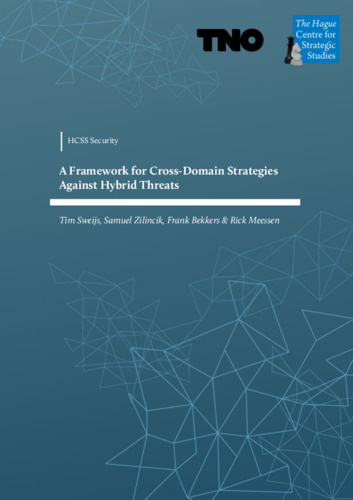Trends in Security Information
The HSD Trendmonitor is designed to provide access to relevant content on various subjects in the safety and security domain, to identify relevant developments and to connect knowledge and organisations. The safety and security domain encompasses a vast number of subjects. Four relevant taxonomies (type of threat or opportunity, victim, source of threat and domain of application) have been constructed in order to visualize all of these subjects. The taxonomies and related category descriptions have been carefully composed according to other taxonomies, European and international standards and our own expertise.
In order to identify safety and security related trends, relevant reports and HSD news articles are continuously scanned, analysed and classified by hand according to the four taxonomies. This results in a wide array of observations, which we call ‘Trend Snippets’. Multiple Trend Snippets combined can provide insights into safety and security trends. The size of the circles shows the relative weight of the topic, the filters can be used to further select the most relevant content for you. If you have an addition, question or remark, drop us a line at info@securitydelta.nl.
visible on larger screens only
Please expand your browser window.
Or enjoy this interactive application on your desktop or laptop.
Hybrid conflict has become more salient
can:
• assist in defining and preparing the pre-requisites for counter hybrid action in terms of capabilities, legal and doctrinal frameworks, and mandate allocation;
• be instrumental in creating unity of action and synergy between counter hybrid measures by tying them together in one coherent whole;
• help in communicating to opponents and allies what are considered to be acceptable forms of hybrid behavior. It can thereby be instrumental in the development of international norms that limit hybrid threat behavior;
• thus ultimately shape the cost calculus of an adversary which in turn can prompt changes in adversarial behavior.
1 Introduction This document serves as a background document to prepare a hybrid conflict game organized by TNO in collaboration with HCSS to gain a better understanding of how cross domain strategies can help in countering hybrid threats.6 Hybrid conflict became more salient during the 2010s and is not likely to wither away in the 2020s. The Netherlands, together with likewise partners in its network of alliances, requires a strategic posture to deal with it. The goal of this document is to lay out a menu of strategies that can be used to actively counter hybrid threats, embedded in a strategic framework that conceptualizes the range of possible strategies in a structured way. The aim of such a framework is to help in understanding both the problem space and the solution space; to offer a range of optional strategies that can be considered in countering the palette of hybrid threats; and to show how these strategies can relate to and complement one another. Such a framework is not only relevant in the identification of appropriate response measures. It can also be used to design a strategic posture. A strategic posture refers to the set of dominant strategies that make up a state’s security policy to achieve a set of objectives. A strategic posture is guided by an overarching purpose and objectives (ends) and offers general guidelines as to how to act and react (ways), thus providing guidance for the development of capabilities (means). In the case of hybrid threats, a strategic posture can: • assist in defining and preparing the pre-requisites for counter hybrid action in terms of capabilities, legal and doctrinal frameworks, and mandate allocation; • be instrumental in creating unity of action and synergy between counter hybrid measures by tying them together in one coherent whole; • help in communicating to opponents and allies what are considered to be acceptable forms of hybrid behavior. It can thereby be instrumental in the development of international norms that limit hybrid threat behavior; and • thus ultimately shape the cost calculus of an adversary which in turn can prompt changes in adversarial behavior. Although a strategic posture represents a codification of the ends and ways, it is dynamic in nature because the evolving character of challenges requires adaptiveness. This document lays down the rationale for the strategic framework and defines and describes the strategies. It describes how these strategies can be plotted on a notional escalation ladder across the different DIMEL domains.7 For each of the strategies, it offers illustrative examples of concrete measures that can be taken across the DIMEL Domains. It then describes a number of issues that need to be considered in the selection and execution of cross-domain strategies, which will be further examined in the hybrid cross-domain strategy game to be held in the summer of 2020 in The Hague.


